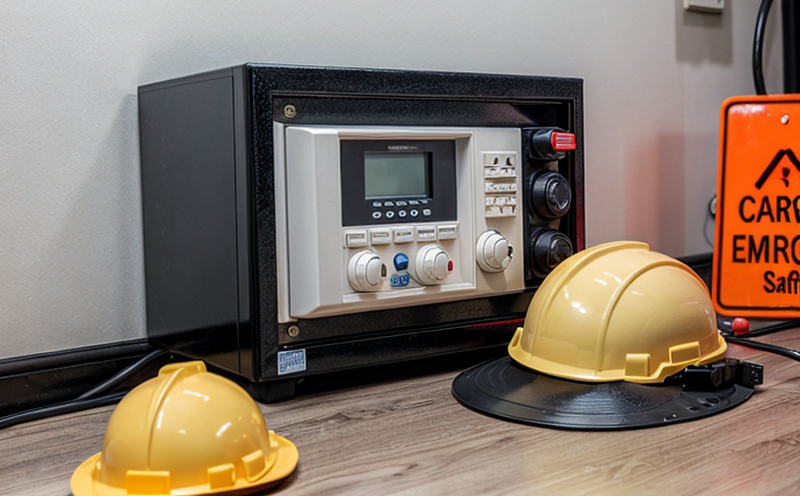FAA Part 121 Emergency Evacuation Drills Testing
The Federal Aviation Administration (FAA) Part 121 regulations are designed to ensure the safe operation of commercial passenger airlines. One of the critical aspects of this safety framework is the requirement for FAA Part 121 operators to conduct regular emergency evacuation drills and testing. These tests are essential in ensuring that all on-board systems, including emergency lighting, exit identification, and communication systems, function correctly under simulated emergency conditions.
Our laboratory specializes in providing comprehensive FAA Part 121 Emergency Evacuation Drills Testing services. Our team of experts ensures compliance with the latest FAA standards and guidelines, helping to maintain safety and reliability for passengers and crew alike. We use state-of-the-art facilities and equipment to simulate real-world emergency scenarios, ensuring that all systems are thoroughly tested.
During these drills, we focus on several key areas:
- Emergency Lighting: Ensuring that lighting is sufficient for safe evacuation under low light conditions.
- Exit Identification: Checking the visibility and effectiveness of emergency exit markings.
- Communication Systems: Verifying that all communication systems are operational and can be used effectively during an emergency.
- Evacuation Procedures: Assessing crew and passenger knowledge and adherence to established evacuation procedures.
The results of these tests provide critical insights into the readiness and reliability of the aircraft's safety equipment. By identifying any shortcomings or areas for improvement, we help operators address potential issues before they can affect flight operations.
Our laboratory adheres strictly to FAA Part 121 regulations and industry best practices, ensuring that our testing services are both thorough and reliable. We provide detailed reports after each test, highlighting any areas of concern and offering recommendations for improvement. This approach ensures that operators are fully prepared to meet all regulatory requirements.
In addition to our testing services, we also offer training programs for crew members to enhance their knowledge and skills in emergency evacuation procedures. These programs are designed to ensure that all personnel involved in the operation of an aircraft are well-prepared to handle any emergency situation effectively.
Scope and Methodology
The scope of our FAA Part 121 Emergency Evacuation Drills Testing includes a comprehensive evaluation of various safety systems that play a critical role in ensuring the safe evacuation of passengers during an emergency. This testing encompasses both on-ground drills as well as onboard evaluations conducted under simulated flight conditions.
For each test, we follow a meticulously planned methodology to ensure accuracy and consistency. The process typically begins with a detailed review of the aircraft’s safety systems and documentation provided by the operator. Following this, our team conducts a series of ground-based tests in our specialized facilities. These include:
- Lighting Tests: Evaluating the brightness and uniformity of emergency lighting across different sections of the aircraft.
- Exit Markings: Inspecting the visibility and readability of exit signs under various light conditions.
- Communication Systems: Testing the functionality and clarity of communication channels between crew members and passengers during simulated emergencies.
- Evacuation Drills: Conducting full-scale evacuation drills to assess passenger and crew response times, procedures, and overall effectiveness.
Once these ground-based tests are completed, we proceed with onboard evaluations. Onboard testing involves simulating flight conditions while conducting a series of checks:
- Emergency Procedures: Ensuring that all emergency procedures can be executed smoothly under simulated flight conditions.
- Communication Systems: Testing the effectiveness of communication systems during various stages of an evacuation.
- Lighting and Visibility: Assessing the visibility of exit markings and other safety features during night flights or low-light scenarios.
The results of these tests are meticulously documented, providing a detailed analysis of each system’s performance. Our reports include recommendations for any necessary improvements to ensure full compliance with FAA Part 121 regulations.
Why Choose This Test
Selecting our FAA Part 121 Emergency Evacuation Drills Testing service is a strategic decision that ensures your airline meets all regulatory requirements and maintains the highest standards of safety. Here are some compelling reasons why you should choose us:
- Comprehensive Coverage: We provide a full range of testing services, covering every aspect of emergency evacuation procedures.
- Expertise and Experience: Our team consists of experienced professionals with in-depth knowledge of FAA regulations and best practices.
- State-of-the-Art Facilities: Utilizing advanced equipment and facilities to conduct rigorous testing under controlled conditions.
- Accurate Reporting: Detailed reports that highlight any areas requiring improvement, providing actionable insights for operators.
- Training Programs: Enhance the skills of your crew members with our comprehensive training programs tailored specifically for FAA Part 121 requirements.
- Regulatory Compliance: Ensuring full compliance with all relevant FAA regulations and industry standards, reducing the risk of non-compliance penalties.
By choosing us, you are investing in the safety and reliability of your operations. Our testing services help to identify potential risks early on, allowing operators to take corrective actions before they can impact flight schedules or passenger safety.





